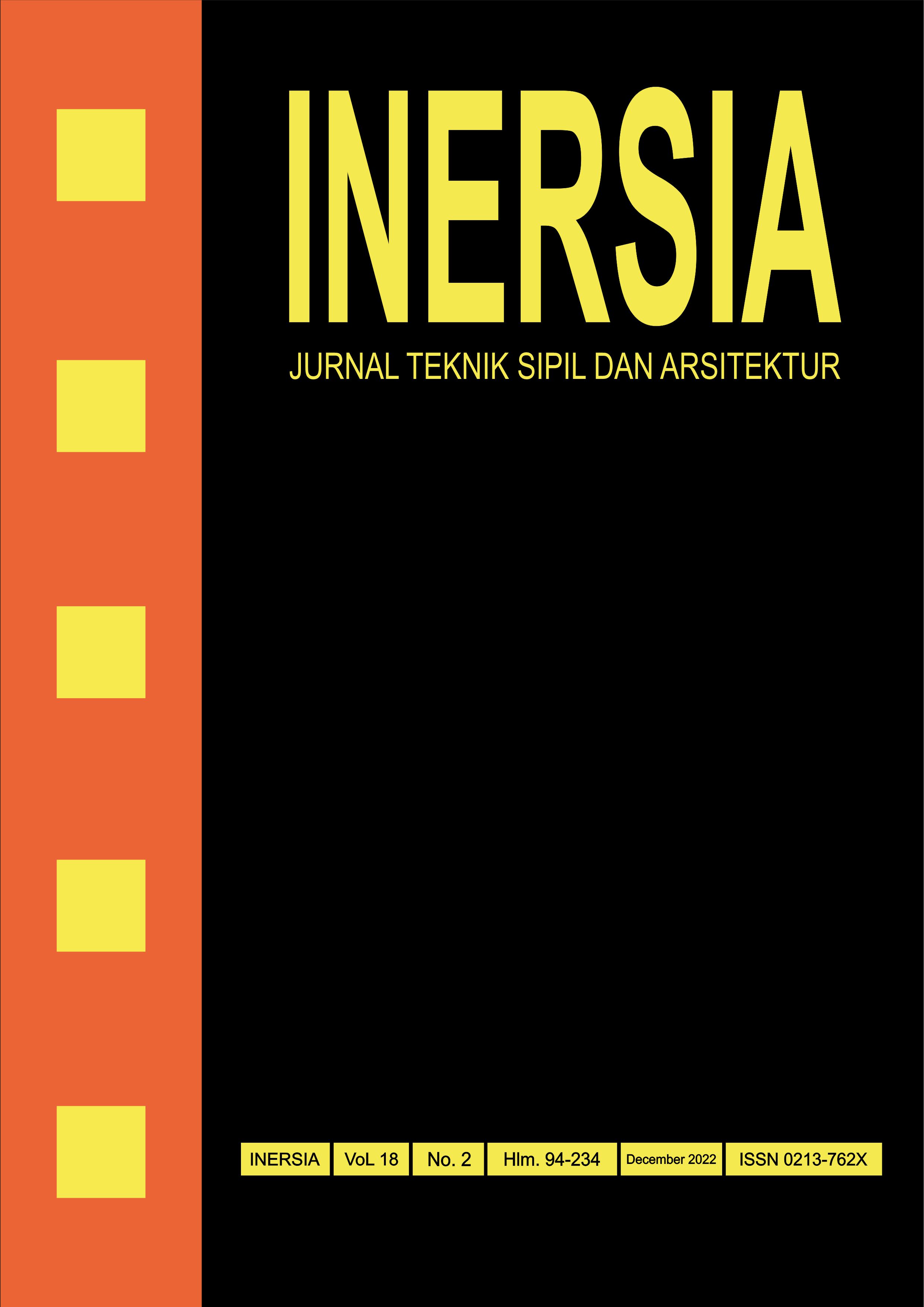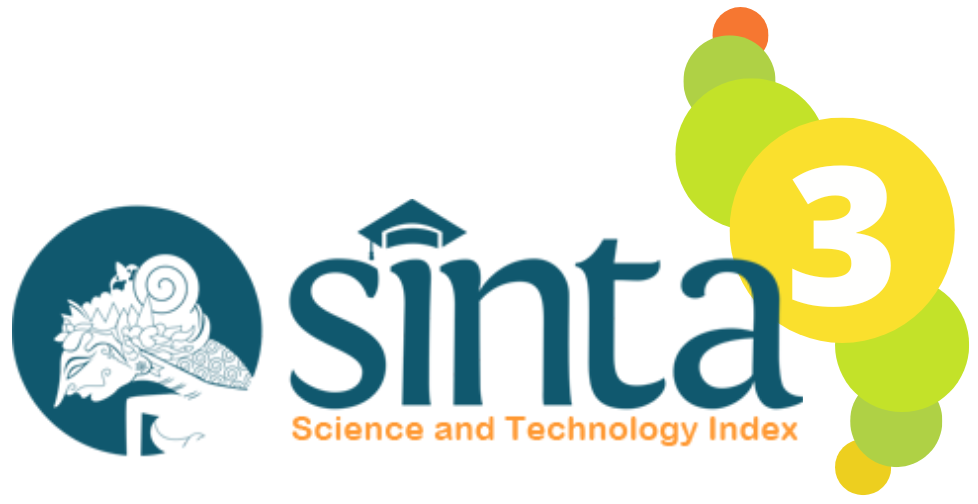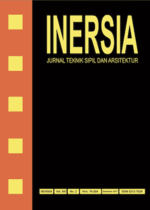Demand Analysis of Material, Construction Equipment, and Labor on the Superstructure of Type I-Girder Bridge
DOI:
https://doi.org/10.21831/inersia.v18i2.53651Keywords:
demand, materials, construction equipment, labor, PCI girderAbstract
Infrastructure development is one of the government's main national priority programs to support economic growth and community welfare. One of the issues encountered related to infrastructure development is that the supply chain capacity of material resources, construction equipment, and labor is not yet ideal. The purpose of this study is to analyze the demand for materials, construction equipment, and labor in the construction work of the superstructure of the bridge. This study used secondary data from some bridge construction work packages obtained from the Directorate General of Spatial Planning and Development, Ministry of Public Works. The research step consists of 7 stages. The total number of research samples is 33 consisting of 15 materials (xn), 15 construction equipment (yn), and 3 labor (zn). Of the five bridge construction work packages that meet the research requirements, the type of materials with the largest total demand is cement (x3) 4.904.156,13 kg and asphalt (x5) 578.620,64 kg. Meanwhile, the results of the construction equipment demand analysis show that the heavy equipment with the longest total operational time is dump trucks (y5) 9.395,61 hours and cranes (y12) 2.942,98 hours. From the analysis of demand labor, it is known that the total working time required is workers (z1) 251.753,97 hours, handyman (z2) 151.209,71 hours, and foreman (z3) 59.303,11 hours. In addition, from the five construction work packages, the prestressed concrete I (PCI) girder with the longest size is 45 meters with 35 pieces, while the PCI girder with the shortest size is 20.6 meters with 14 pieces. In terms of needs, the highest number of PCI girders is 42 pieces, and PCI girders with a minimum number of 10 pieces.
References
BPS Statistics Indonesia, Ed., Proyeksi Penduduk Indonesia 2015 - 2045 Hasil Supas 2015, Edisi Revi. 2018.
"Peraturan Presiden Republik Indonesia Nomor 38 Tahun 2015 Tentang Kerjasama Pemerintah Dengan Badan Usaha Dalam Penyediaan Infrastruktur," 2015.
"Peraturan Presiden Republik Indonesia No. 18 Tahun 2020 Tentang Rencana Pembangunan Jangka Menengah Nasional 2020-2024," 2020.
"Rencana Strategis Tahun 2020 - 2024 Kementerian PUPR," pp. 1–277, 2020.
B. Supriyadi and A. S. Muntohar, "Jembatan (Edisi Pertama)," pp. 1–244, 2007.
J. Onding, L. S. Balamba, O. B. A. Sompie, and A. N. Sarajar, "Analisis Kestabilan Pondasi Jembatan Studi Kasus : Jembatan Essang-Lalue," J. Sipil Statik, vol. 1, no. 11, pp. 730–744, 2013.
S. Burhanuddin, "Knowledge Managemenet Penerapan Teknologi Konstruksi," Kementeri. PUPR, 2018.
Misbahuddin and I. Hasan, Analisis Data Penelitian dengan Statistik (Edisi Kedua), Edisi 2. Jakarta: Sinar Grafika Offset, 2013.
Manual Pemeliharaan Jembatan Pelengkung Beton. 2011.
"Buku Saku Petunjuk Konstruksi Jembatan," pp. 68–70, 2020.
"Analisa Harga Satuan Pekerjaan (AHSP) Bidang Pekerjaan Umum," Standar Nas. Indones. - SNI., p. 337, 2012.
Nuryadi, T. D. Astuti, E. S. Utami, and M. Budiantara, Dasar - Dasar Statistik Penelitian. 2017.
S. Kurniawan Adi, S. Murtiadi, and B. Anshari, "Analisis Risiko Pemilihan Metode Kerja Pemasangan Girder Pekerjaan Penggantian Jembatan Olor Gedang Berdasarkan Aspek Non Finansial dan Finansial," vol. 16, no. 7, pp. 7045–7058, 2022.
A. B. Broto and D. A. M. Maulana, "Penerapan Fahp Pada Pemilihan Metode Pelaksanan Erection Box Girder," J. Poli-Teknologi, vol. 19, no. 1, pp. 87–98, 2020, doi: 10.32722/pt.v19i1.2732.
Downloads
Published
How to Cite
Issue
Section
License
Authors who publish with INERSIA journal agree to the following terms:
- Authors retain copyright and grant the INERSIA journal right of first publication with the work simultaneously licensed under Creative Commons Attribution License (CC BY 4.0) that allows others to share the work with an acknowledgment of the work's authorship and initial publication in this journal.
- Authors can enter into separate, additional contractual arrangements for the non-exclusive distribution of the published version of the work (e.g., post it to an institutional repository or edit it in a book), with an acknowledgment of its initial publication in this journal.
- Authors are permitted and encouraged to post their work online (e.g., in institutional repositories or on their website) before and during the submission process, as it can lead to productive exchanges, as well as earlier and greater citation of published work.

INERSIA by https://journal.uny.ac.id/index.php/inersia was distributed under a Creative Commons Attribution 4.0 International License











